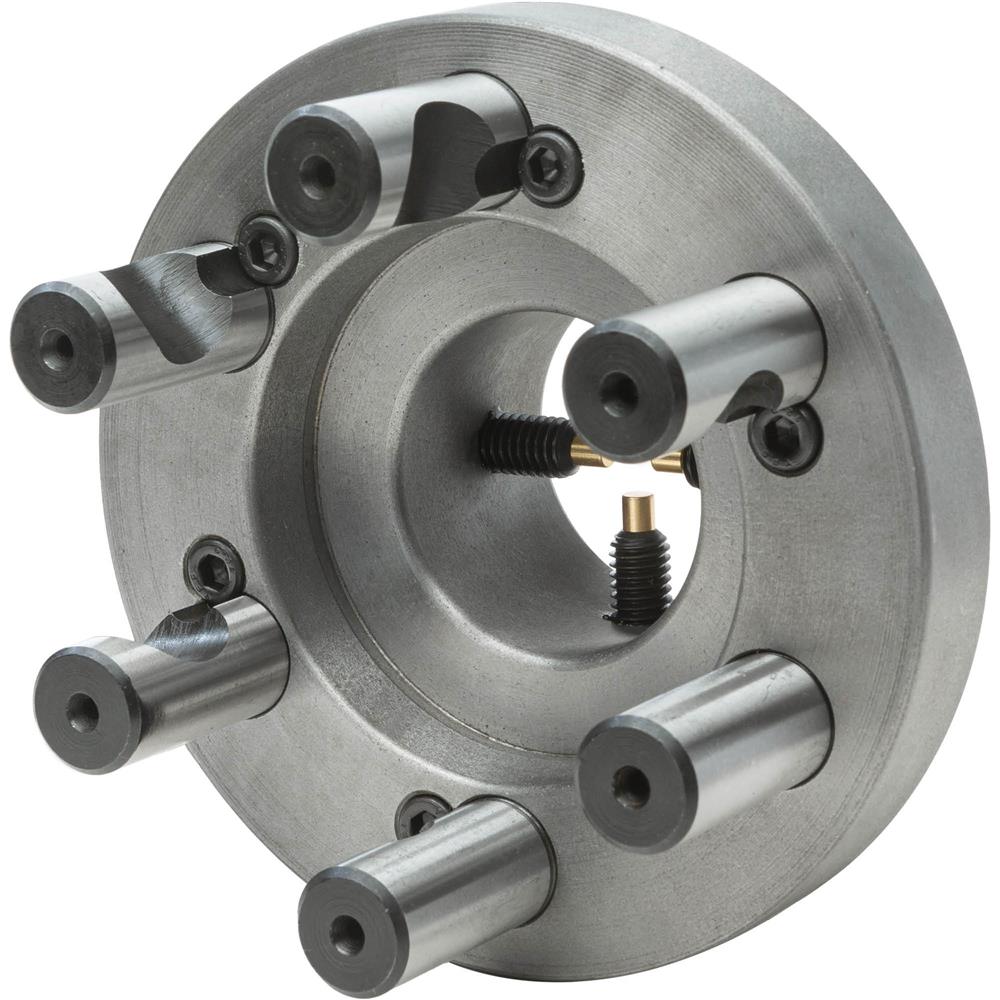If you intend to run the muzzle end of the barrel blank in the chuck, and the chamber end in a steady rest, it won't matter much. Any decent quality 4 jaw independant, or set-tru style 3 or 6 jaw scroll chuck will work. I've finished many barrel blanks that way.
That said, lately I've been going with a set of 4-screw spiders. One on on the spindle nose and one on the back of the spindle. The job seems to go quicker and easier that way.
I have several that I made for various similar purposes.
This is my front and back spider, for cutting / threading tenons and chambering.

My backside spider threads directly into the spindles preload nut threads.

If you look at the specs of the lathe you ordered, you may get lucky and find it already has an integral rear spider.
This is a spider chuck I made for truing receivers and bolts. I could easily chamber barrels in it as well.

If you don't want to make one, grizzly sells a pre made, d1-5 direct mount spider. You'd probably have to fabricate the rear spider.
The Gunsmith's Back Plate has "spider" supports machined into them, which allows shorter barrels to be supported through the headstock of larger lathes. D1-5 type without guard.

www.grizzly.com






